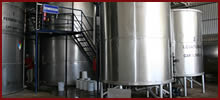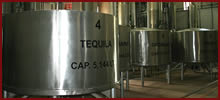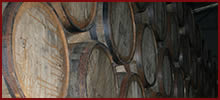| < | Jima »After seven to ten years of care, the agaves from the Jalisco Highlands are selected in its maturity peak to be “jimados”. The Jima process consists of shedding the agave arms to leave the heart open, also known as piña (agave pineapple). |
Cooking »The agave pineapples are then steam cooked in steel kettles known as autoclaves, where temperature and pressure are controlled in order to reach its optimum cooking peak, leaving it with a unique aroma and taste of agave. |
|
Milling » The cooked agave pineapples, once cold and milled, are then squeezed to extract its juice or “mosto”. |
|
Fermentation » Fermentation takes place through the cultivation and control of the agave natural yeasts. It then transforms the agave juice’s sugar into alcohol. This process takes between 48 to 72 hours. Our tequila masters then carefully watch the temperature levels in order to get the highest performance and quality of the alcohol. |
|
Distillation » Once fermentation is over, the agave juice is known as “dead mosto”. This is then distilled twice to separate the alcohol within. The product of the first distillation is known as “ordinary” and only in the second distillation is tequila obtained. Our distillation processes are optimally controlled to obtain the highest alcohol quality, without compromising the taste and aroma of the agave from the Jalisco Highlands. |
|
Aging » In this process, we use carefully selected American oak barrels. Each product requires a different aging period: aged 60 days; and extra-aged, from one year to up to three years. |
|






